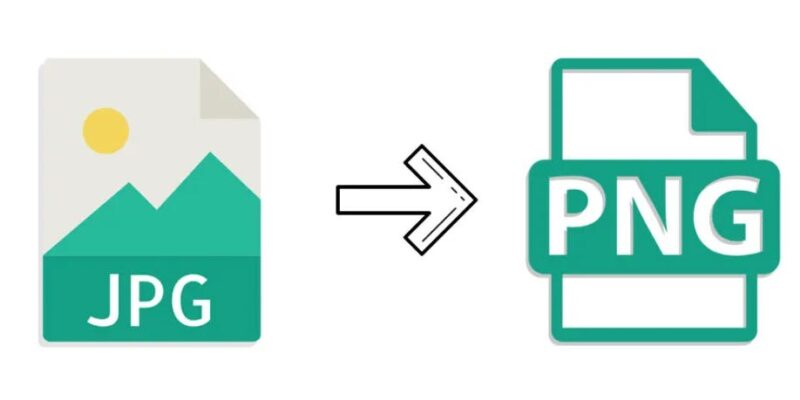
JPG To PNG Converter
Understanding the Difference Between JPG and PNG Formats
Introduction
Within the enormous world of digital media, photographs are essential for communicating ideas, arousing feelings, and preserving moments. JPG and PNG are two of the most popular image formats out of all the ones that are available. However, in order to maximize file size, general performance, and image quality, it is imperative to comprehend the differences between these formats. We’ll explore the subtle differences between JPG and PNG in this blog post, enabling you to interact with digital images more intelligently. If you need to switch between these formats seamlessly, a JPG to PNG Converter can be incredibly useful.
The JPG Format: A Closer Look
JPEG, short for Joint Photographic Experts Group, is a widely adopted image format renowned for its versatility and compression capabilities. Initially introduced in the early 1990s, JPG quickly gained popularity due to its ability to efficiently reduce file sizes while maintaining acceptable image quality. The compression algorithm employed by JPG achieves this by discarding redundant image data, thus resulting in smaller file sizes ideal for web usage and storage efficiency.
Understanding PNG: The Portable Network Graphics Format
In contrast to JPG, PNG, which stands for Portable Network Graphics, prioritizes image fidelity and transparency preservation. Developed as an opensource alternative to proprietary formats, PNG emerged in the mid1990s with a focus on lossless compression and support for alpha channels. Unlike JPG, PNG retains all image information without sacrificing quality, making it suitable for graphics that require precise details and transparency layers, such as logos, icons, and illustrations.
Image Quality: JPG vs. PNG
When comparing image quality between JPG and PNG, it’s essential to consider the nature of the content and intended usage. While JPG compression is efficient for photographs and images with gradual color transitions, it may introduce artifacts and loss of detail in areas with sharp edges or text. On the other hand, PNG excels in preserving image integrity, making it the preferred choice for graphics with text, line art, and areas of uniform color.
Transparency and Alpha Channels
Transparency is a crucial aspect of digital imagery, particularly in web design and graphic design applications. PNG’s support for alpha channels enables the creation of images with varying levels of opacity, allowing for seamless integration into different backgrounds. In contrast, JPG does not support transparency, making it less suitable for designs that require overlaying elements or blending with diverse backgrounds.
Compression Techniques: Lossy vs. Lossless
One of the fundamental distinctions between JPG and PNG lies in their compression techniques. JPG employs lossy compression, which selectively discards image data to reduce file size. While this results in smaller file sizes, it may lead to a loss of image quality, especially upon repeated saving or editing. Conversely, PNG utilizes lossless compression, retaining all original image data without sacrificing quality, albeit at the expense of larger file sizes.
Use Cases and Best Practices
Understanding the strengths and limitations of JPG and PNG is crucial for selecting the appropriate format for specific use cases. For photographs and images with complex color gradients, JPG remains the preferred choice, balancing quality and file size. Conversely, PNG is recommended for graphics requiring transparency, such as logos, icons, and digital artwork, where preserving image fidelity is paramount.
Performance Considerations: Loading Times and Bandwidth
In today’s digital landscape, website performance is a critical factor influencing user experience and search engine rankings. The choice between JPG and PNG can significantly impact loading times and bandwidth consumption. While JPG’s smaller file sizes contribute to faster loading speeds, PNG’s transparency support may outweigh the slight performance tradeoff in scenarios where image quality and transparency are indispensable.
Optimizing Image Formats: Tools and Techniques
Fortunately, various tools and techniques are available to optimize image formats and strike a balance between quality, file size, and performance. From image editing software with export settings tailored to specific requirements to online compression tools that minimize file size without compromising quality, leveraging these resources empowers content creators to deliver visually compelling experiences across digital platforms.
Conclusion: Empowering Image Optimization
In conclusion, optimizing image quality, file size efficiency, and overall performance in digital media applications requires an understanding of the differences between JPG and PNG formats. Content makers can make well-informed judgments to guarantee that their images engage people while minimizing bandwidth usage and loading times by understanding the distinct strengths and drawbacks of each format. Utilizing a JPG to PNG converter can also be beneficial in selecting the appropriate format for specific needs. Selecting the appropriate image format is essential for creating visually engaging stories in the digital age, regardless of whether the picture is a striking snapshot or a painstakingly created graphic.
Frequently asked questions (FAQs)
- What is the main difference between JPG and PNG formats?
The primary difference lies in their compression techniques and use cases. JPG utilizes lossy compression, making it suitable for photographs and images with gradual color transitions. PNG, on the other hand, employs lossless compression and supports transparency, making it ideal for graphics requiring precise details, text, or transparency layers.
- Which format should I use for web images to balance quality and file size?
For web images, the choice between JPG and PNG depends on the content. If the image contains complex color gradients or photographs, JPG is preferred for its smaller file sizes and acceptable quality. However, if the image involves transparency, such as logos or icons, PNG is recommended to preserve image fidelity and transparency layers.
- How does image format selection impact website performance?
The image format selected can significantly affect website loading times and bandwidth consumption. While JPG’s smaller file sizes contribute to faster loading speeds, PNG’s support for transparency may slightly increase loading times. However, the impact on performance is generally minimal, and optimizing images through compression techniques can mitigate any potential drawbacks.
- Are there any tools available to optimize image formats?
Yes, numerous tools and techniques exist to optimize image formats based on specific requirements. Image editing software often includes export settings tailored to balance quality and file size.











